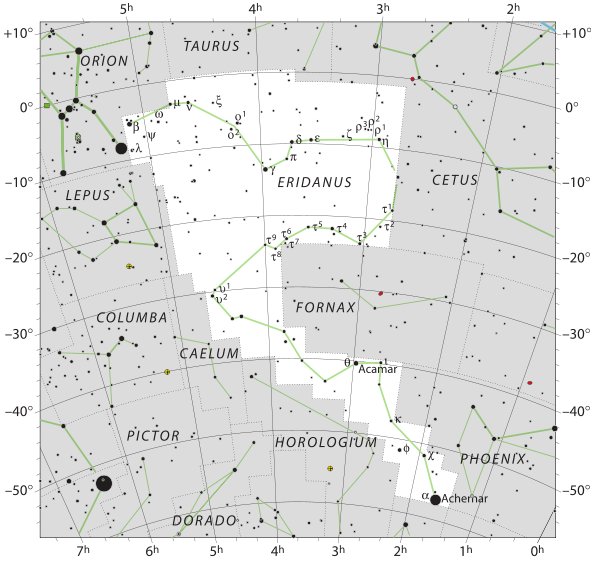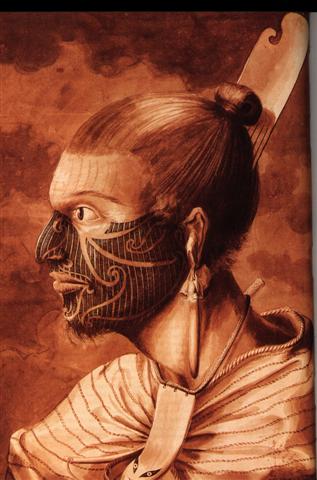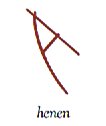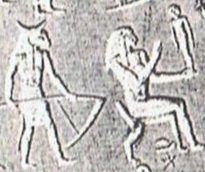The structure 22 + 6 = 27 days could have corresponded to the Roman Mensis Intercalaris sometimes used at the end of their old year. This idea can be applied when reading the G text at the end of side b where we will perceive a period with 22 (or perhaps 23) days described as puo (covered up, 'hilled up'):
... a 27-day intercalary month, the Mensis Intercalaris, was sometimes inserted between February and March. This intercalary month was formed by inserting 22 days after the first 23 or 24 days of February; the last five days of February, which counted down toward the start of March, became the last five days of Intercalaris. The net effect was to add 22 or 23 days to the year, forming an intercalary year of 377 or 378 days ... ... The leap day was introduced as part of the Julian reform. The day following the Terminalia (February 23) was doubled, forming the 'bis sextum - literally 'double sixth', since February 24 was 'the sixth day before the Kalends of March' using Roman inclusive counting (March 1 was the 'first day') ...
According to Manuscript E the listed variants of sweet potatoes (ku-mara), brought onboard the Royal Double Canoe, Mara. To start rotting, going bad (e.g. a lobster, a fish). See also mamara. Vanaga. Mgv.: mara, open land, cultivated field. Mq.: mara, maa, land under tilth. Ta.: amara, the first stone of a marae, etc. Sa.: mala, a new plantation. Ma.: mara, land under tilth. Churchill. Sa.: malae, the town green. Nukuoro: malae, a cleared space, an open place, a plantation. To.: malae, a gree, a grass plot ... Ha.: malae, smooth (as a plain) ... Ma.: marae, an inclosed place in front of a house. Ta.: marae, the sacred place of worship ... Vi.: mara, a burying place ... In note 261 I have advanced the opinion that malae is in form a conditional derivative of lae. This holds of the signification found in Nuclear Polynesia. The secondary sense which the Tongafiti carried to eastern Polynesia has obscured the lae element; but the sacrosanct content of the marae in the four-godded theology of eastern Polynesia is after all but a logical outgrowth of the Nuclear Polynesian malae as the civic center of social life where god is sole, surpreme - and Lucretian ... Churchill 2. evidently began after Bharani: ... The underground (not now visible but heaped up - puo) plants uhi and kumara at the end of the back side of the text on the G tablet were followed by maika on side a.
Although there existed 6 variants of banana on Easter Island, one of them (ri'o) was mysteriously absent from the maika list in Manuscript E. But this was, it seems, compensated for by 1 extra variant of kumara. Instead of the expected 20 (the standard score for counting round things like eggs and potatoes) there were 21 enumerated sweet potatoe variants to be brought onboard the Royal Double Canoe:
Maybe we should perceive the Egg (Beid) as equivalent to the place of Bissextum - like 'a pair of eggs'. This thought is supported by the design of the glyphs and also by the fact that there was a pair of stars named ο Eridani:
Side a ought to begin at right ascension day *64. Although this position has no glyph, we can anyhow count 1 (the Follower, Al Dabarān = Hyadum I) + 5 (listed variants of maika) = 6 (sextum) in order to reach Aldebaran (the star pillar at the end, Ana-muri):
They made 6 stone heaps outside the cave of the mortally wounded 'digging stick'.
... They went ashore and took the food [te kai] with them. They pulled the canoe onto the beach and left it there. Ira sat down [he noho] with all the other (companions) and spoke to Makoi [ka ki era kia Makoi]: 'You shall mark the land for me and make it known (by its name)!' After that, Ira spoke these words: 'This is the diggning stick (? ko koko], Kuukuu. You shall work the land for me and plant the yam roots [te uhi]!' They made camp and constructed a house [te hare]. Kuukuu got up, worked the ground, and heaped up the earth for the yam roots [he puke i te uhi] ... [E:18] This erection of 6 stone heaps was 'well done', as if indicating a very good (maitaki) 'cooking' down in the 'earth oven' - which would result in his rebirth as a baby boy. ... Then they all said to the stone heaps, 'Whenever he calls, whenever he calls for us, let your voices rush (to him) instead of the six (of us) (i.e., the six stone heaps are supposed to be substitutes for the youths). They all drew back to profit (from the deception) (? ki honui) and listened. A short while later, Kuukuu called. As soon as he had asked, 'Where are you?' the voices of the stone heaps replied, 'Here we are!' All (the youths) said, 'Hey, you! That was well done!' ... [E:29] Clearly their actions could have been intended to point at the Pleiades (the 6 'stones', Tau-ono), which north of the equator was the marker for where a new year would begin. This should be where Kuukuu was reborn, where he would return from the cave. For the 'naming' should follow that in Hiva. ... How shall I give the names? Again Ira spoke, In Hiva are the names that are to be taken to name (the places of the new land) ... [E:37] Therefore the cave at Oromanga ought to come immediately before the Pleiades. 22 + 6 (stone heaps) = 27 = 377 - 350. ... It will then become reasonable to compare the 27 nights in Oromanga with those 27 extra nights sometimes inserted in Roman times:
... a 27-day intercalary month, the Mensis Intercalaris, was sometimes inserted between February and March. This intercalary month was formed by inserting 22 days after the first 23 or 24 days of February; the last five days of February, which counted down toward the start of March, became the last five days of Intercalaris. The net effect was to add 22 or 23 days to the year, forming an intercalary year of 377 or 378 days ... North of the equator the Pleiades were thought of as 7 stars ('birds'), but on Easter Island the Pleiades had only 6 stars. And therefore there were only 6 variants of banana on Easter Island. North of the equator one of the seven had been 'lost', after having married a mortal. The corresponding myth south of the equator ought to be that one of the banana variants had mysteriously disappeared (out of sight, been covered up, puo). ... According to mythology, Alcyone and Celaeno were both seduced by Poseidon. Maia, the eldest and most beautiful of the sisters, was seduced by Zeus and gave birth to Hermes; she later became foster-mother to Arcas, son of Zeus and Callisto. Zeus also seduced two others of the Pleiades: Electra, who gave birth to Dardanus, the founder of Troy; and Taygete, who gave birth to Lacedaemon, founder of Sparta. Asterope was ravished by Ares and became mother of Oenomaus, king of Pisa, near Olympia, who features in the legend of Auriga. Hence six Pleiades became paramours of the gods. Only Merope married a mortal, Sisyphus, a notorious trickster who was subsequently condemned to roll a stone eternally up a hill ...
|
|||||||||||||||||||||||||||||||||||||||||||||||||||||||||||||||||||||||||||||||||||||||||||||||||||||||||||||||||||||||||||||||||||||||||||||||||||||||||||||||||||||||||||||||||||||||||||||||||||||||||||||||||||||||||||||||||||||||||||||||||||||||||||||||||||||||||||||||||||||||||||||||||











